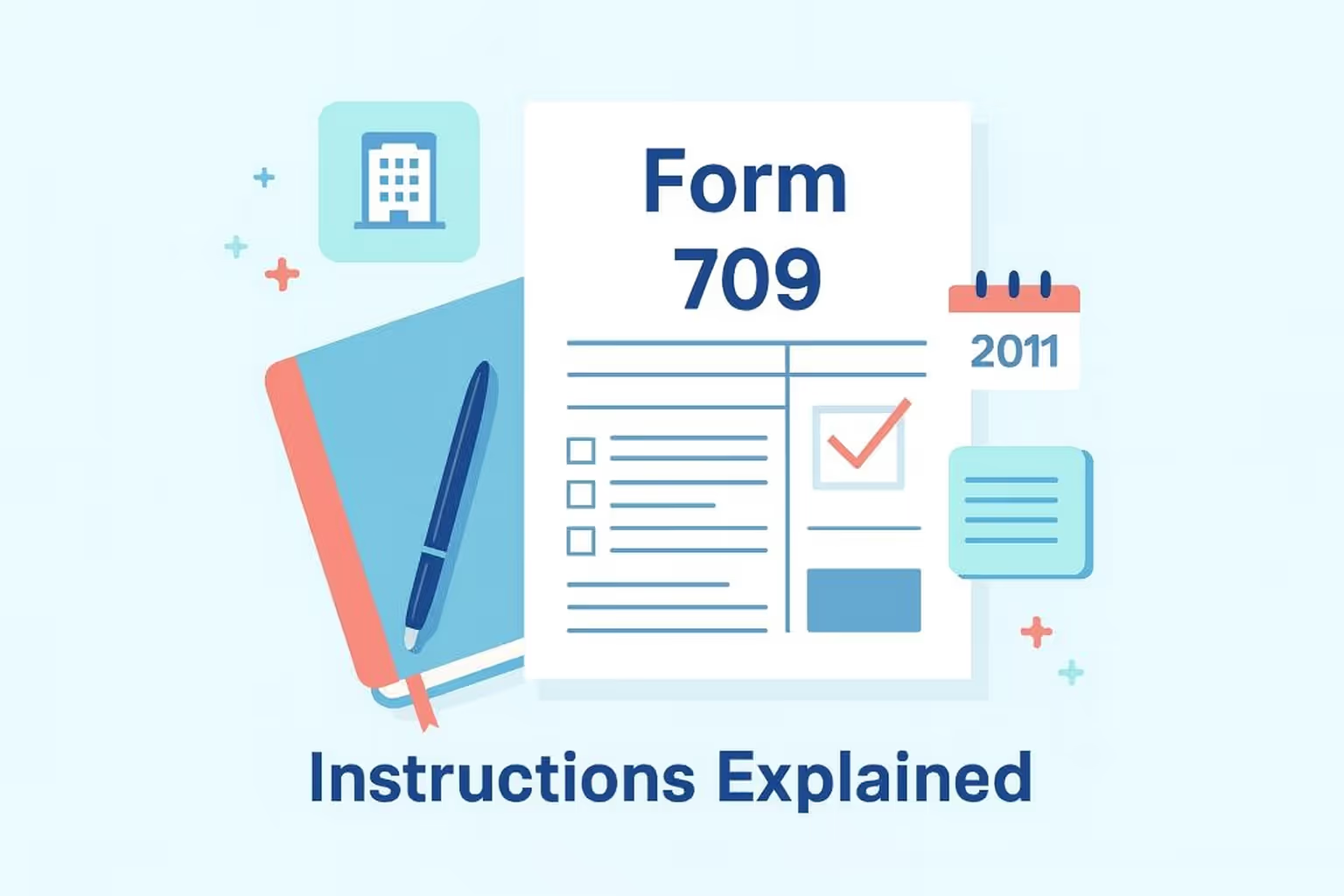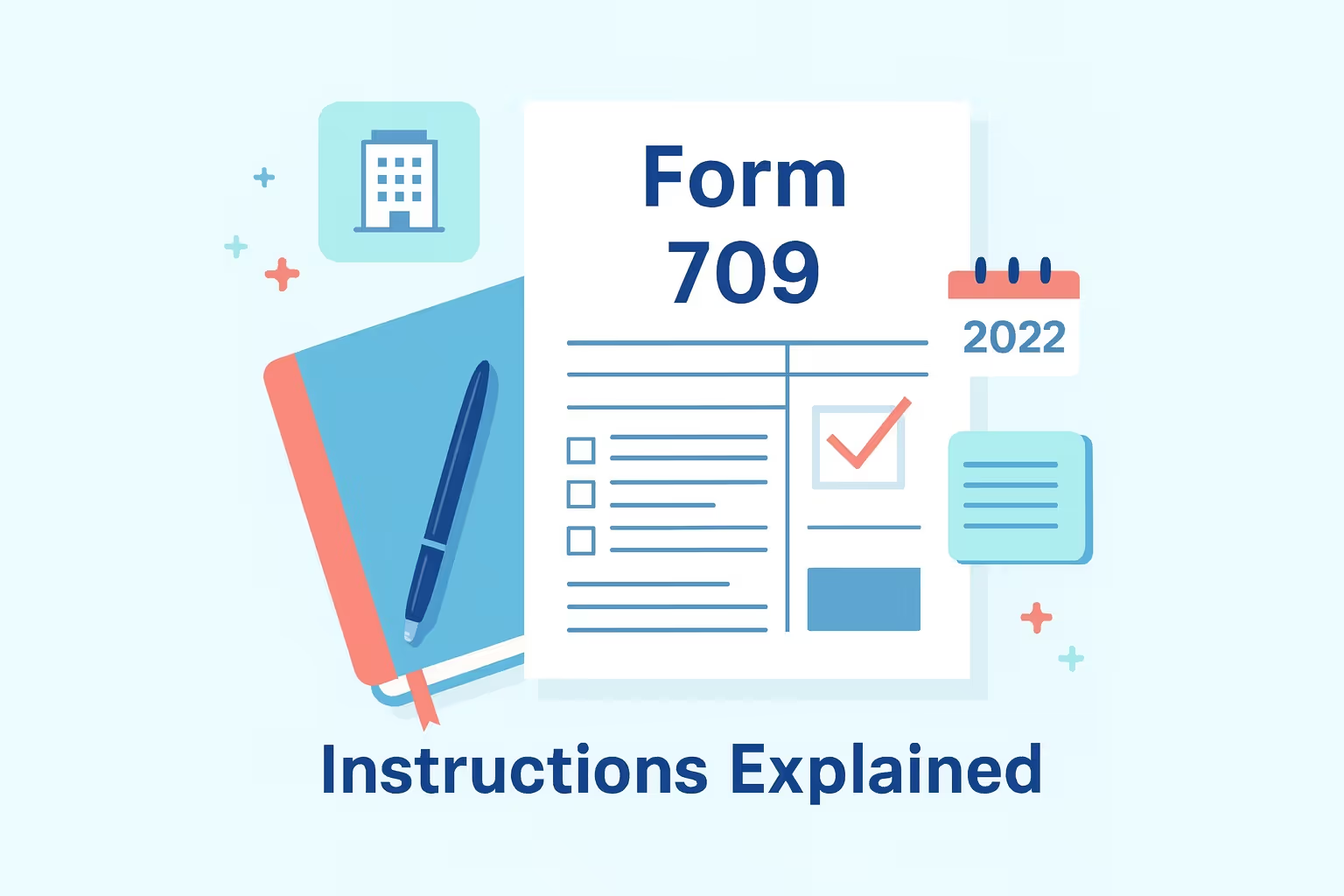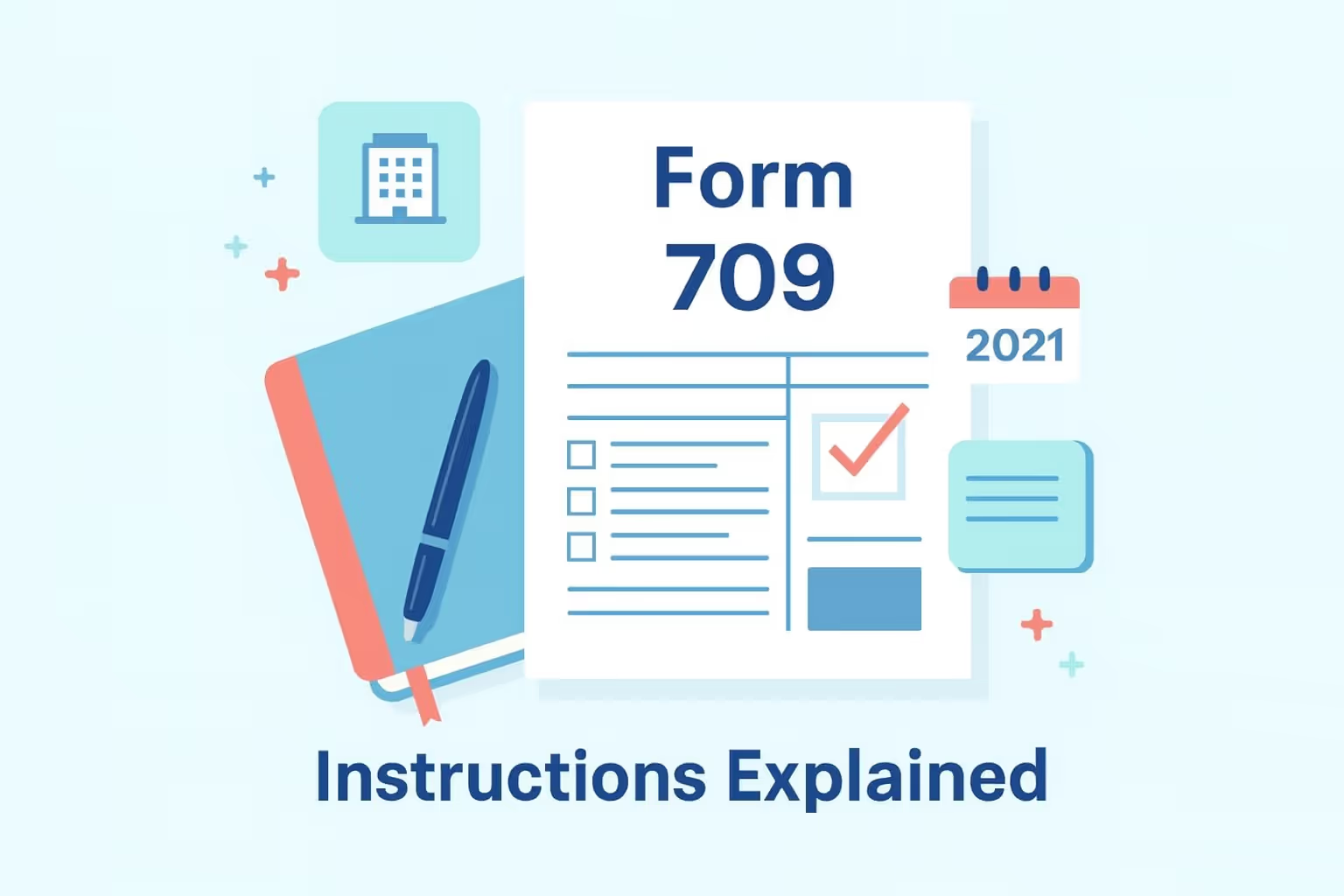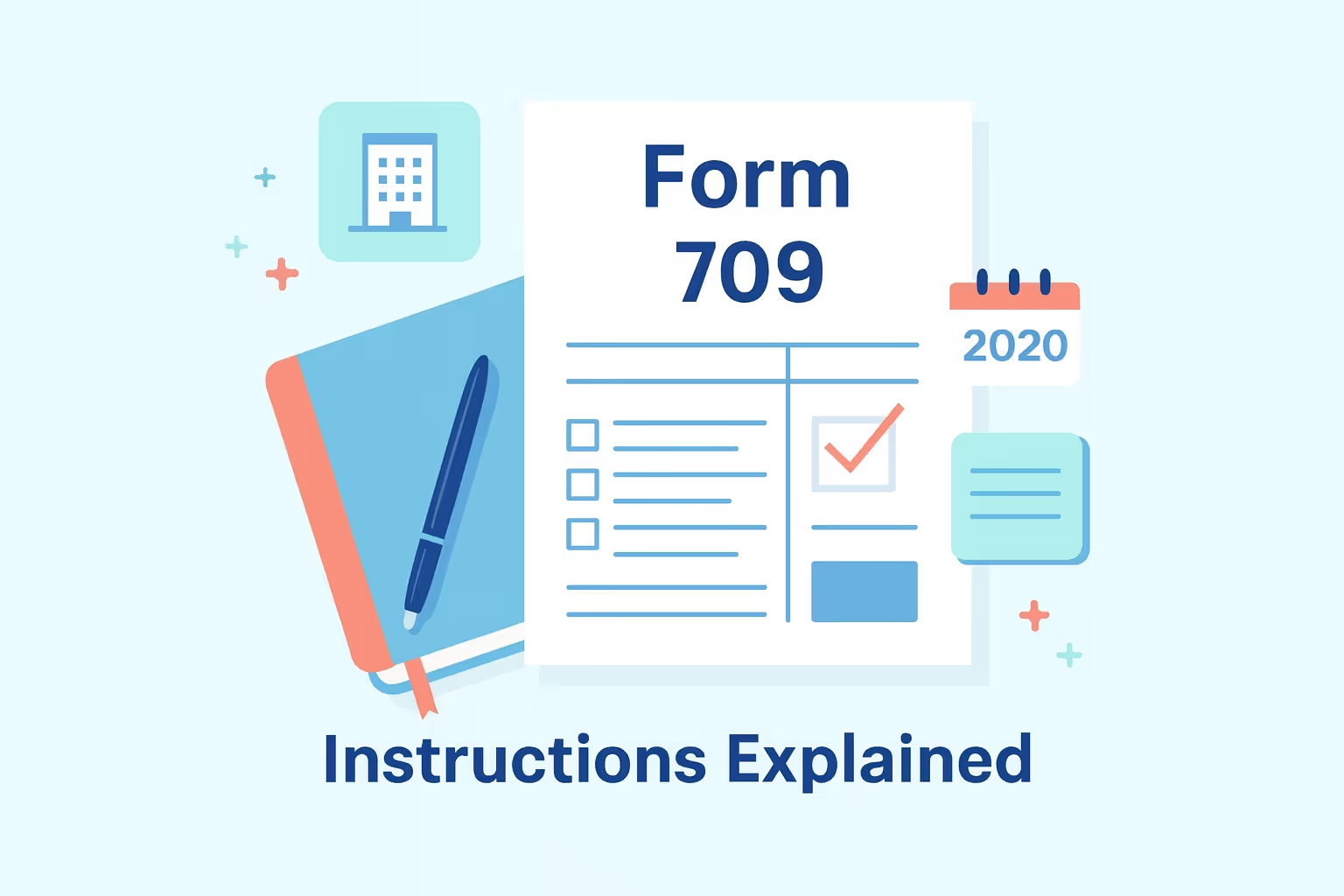How to File IRS Form 709 for 2010: Gift Tax Guide
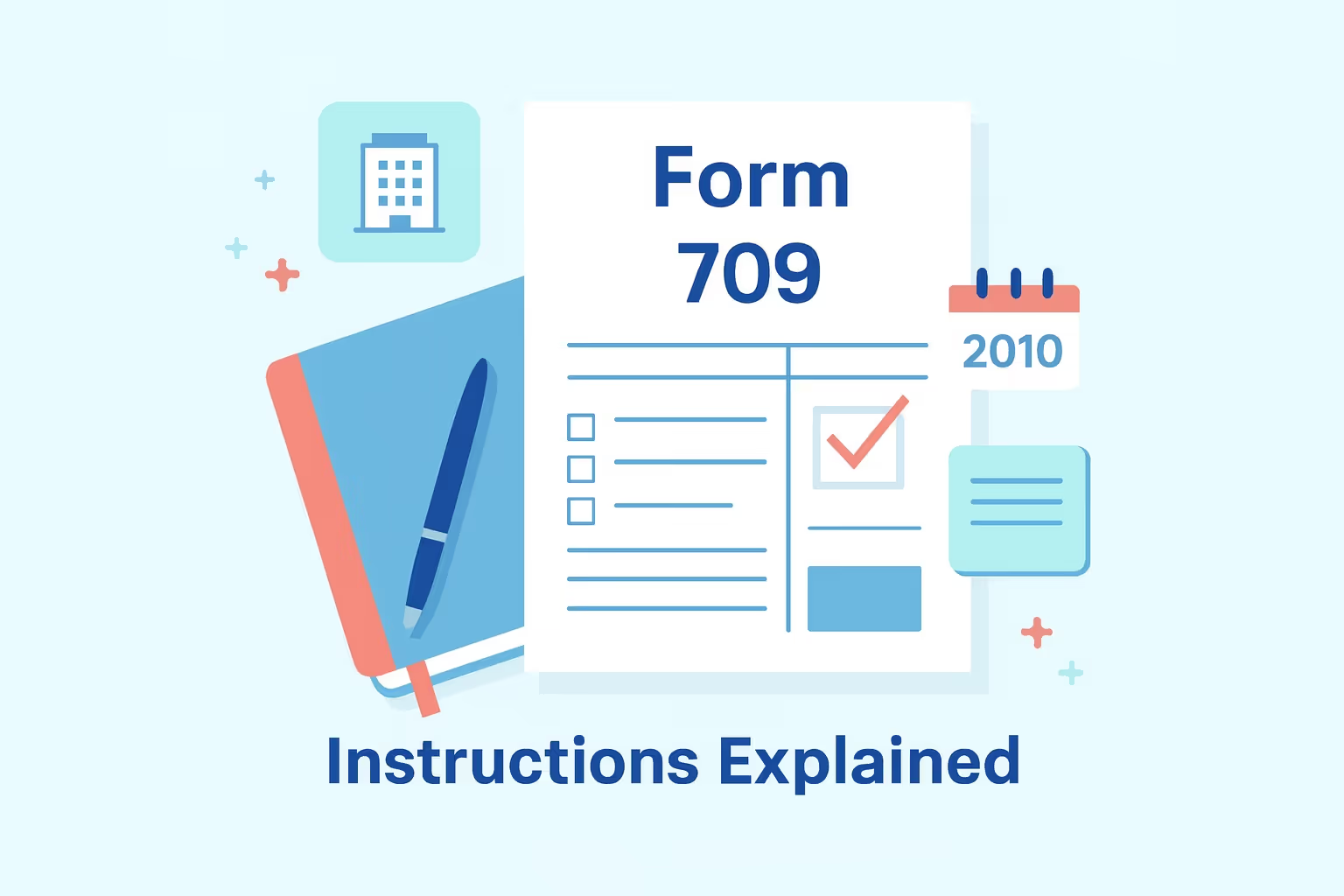
The Internal Revenue Service requires individuals to use Form 709, United States Gift (and Generation-Skipping Transfer) Tax Return, to report certain transfers of property made during a specific tax year. For the 2010 tax year, the form was used to declare gifts exceeding the annual exclusion amount, elect gift splitting with a spouse, or report gifts subject to generation skipping transfer rules. While these rules are highly technical, the purpose of the return is straightforward: to document taxable transfers and apply available exemptions or credits to reduce federal gift tax liability.
Form 709 plays a crucial role in federal gift tax reporting, even for individuals who may not owe tax immediately. The annual gift tax exclusion for 2010 was set at $13,000 per recipient, and special limits applied to gifts made to non-citizen spouses. Larger transfers, future interest gifts, or specific gifts that involve two or more generations require detailed reporting. By filing a gift tax return, taxpayers ensure the accurate tracking of lifetime gifts, the proper application of the lifetime gift tax exemption, and the correct allocation of the generation-skipping transfer tax exemption.
This guide explains how to file Form 709 for 2010, using the official 2010 IRS instructions as the primary reference. It outlines who must file, the steps to complete the return, common filing errors, and important filing deadlines. The content is designed for individuals unfamiliar with tax law, offering a step-by-step explanation to make reporting clear, accessible, and compliant with federal tax requirements.
What Is IRS Form 709?
IRS Form 709, officially titled the United States Gift (and Generation-Skipping Transfer) Tax Return, is the document the Internal Revenue Service requires individuals to file when certain transfers of property are made. This form ensures compliance with federal gift tax laws and tracks both annual and lifetime gift tax exemptions. It also provides a record for estate tax purposes, since lifetime gifts can affect future estate tax liability.
Form 709 serves two main functions:
- It reports gifts made during the tax year that exceed the annual exclusion amount. These are considered taxable gifts, although tax may not be due immediately if applicable credits or exemptions are available.
- It records transfers subject to the generation-skipping transfer tax, which applies when property is transferred to recipients who are two or more generations younger than the donor, such as grandchildren.
In addition to reporting taxable gifts, Form 709 allows taxpayers to elect gift splitting with a spouse, which doubles the annual exclusion amount by treating each gift as half from each spouse.
The form also covers special situations, such as gifts qualifying for the marital deduction, transfers to qualifying charities, or gifts involving only a partial interest in property. Overall, it ensures that exclusions are applied correctly, lifetime gift tax exemption amounts are accurately tracked, and adequate disclosure is maintained for compliance purposes.
Who Must File Form 709 for 2010?
The Internal Revenue Service requires specific individuals to file a gift tax return for the 2010 tax year. Filing obligations arise in situations where gifts exceed exclusion limits or involve transfers that require special reporting. These conditions include:
- An individual must file if total gifts to any one person in 2010 exceeded the annual gift tax exclusion amount of $13,000. This rule applies whether the gifts were in cash, property, or other transferred assets.
- Filing is required if the donor made any future interest gifts, regardless of the gift’s value. Future interest refers to gifts where the recipient cannot immediately use or enjoy the property, such as interests in a trust.
- A gift tax return is required if a donor elects gift splitting. In this case, both spouses must file separate returns to account for the split.
- Individuals must file if they made gifts to a non-citizen spouse exceeding $134,000. Special exclusion limits apply in these cases since the unlimited marital deduction is not available.
- A filing is required when property is transferred from jointly owned or community property and the transaction meets the reporting threshold.
A gift tax return is not required if all gifts were within the annual exclusion amount, consisted only of present interest gifts, or were transfers that qualified fully for the marital deduction to a U.S. citizen spouse. These guidelines ensure that all significant transfers are reported for federal gift tax purposes, even if no gift tax is immediately applicable.
Key Gift Tax Changes in 2010
Several changes in federal gift tax rules took effect specifically in the 2010 tax year. These updates affected exclusion limits, exemption amounts, and filing deadlines, making it essential for taxpayers to understand the new requirements:
- The annual gift tax exclusion remained set at $13,000 per recipient. Taxpayers were able to give up to this amount per person without reducing their lifetime gift tax exemption.
- The exclusion for gifts to non-citizen spouses increased to $134,000. This provided expanded flexibility for cross-border families while maintaining limits on tax-free transfers.
- The top federal gift tax rate was lowered to 35 percent, resulting in a reduced potential compared to prior years.
- The unified credit was established at $330,800, which shielded up to $1 million in lifetime taxable gifts from immediate taxation.
- The generation-skipping was temporarily set to zero percent, while the exemption amount increased to $5 million. This allowed individuals to transfer substantial wealth to grandchildren or other skip persons without incurring tax for that year.
- The filing deadline was extended to April 18, 2011, due to a legal holiday in Washington, D.C., providing taxpayers with additional time to file.
These adjustments reflected temporary relief measures and required careful application when calculating exclusions and tax liability.
Step-by-Step Guide to Completing Form 709
Completing Form 709 requires attention to detail and accurate documentation of all transfers made during the 2010 tax year. Taxpayers should begin by gathering records of all gifts, including appraisals for property and any supporting documents related to complex transfers. The following steps outline the proper procedure for completing the federal gift tax return.
Step 1: Determine Filing Requirement.
The first step is to confirm whether a return must be filed. Filing is required if gifts exceed the annual exclusion amount, if future interest gifts were made, or if special transfers, such as those to a non-citizen spouse, occurred.
Step 2: Identify Reportable Gifts.
Next, taxpayers should list all gifts that require reporting. Sure, gifts are not considered taxable gifts and can be excluded from taxation.
Step 3: Decide on Gift Splitting.
If spouses choose to elect gift splitting, each must file a separate return. Both returns must include the election so the Internal Revenue Service can properly apply the doubled annual exclusion amount.
Step 4: Complete Part 1.
The donor’s basic information, including personal details and filing status, must be entered in Part 1. This section establishes the taxpayer’s identity and confirms the reason for filing the return.
Step 5: Record Gifts on Schedule A.
All reportable gifts are listed on Schedule A. Taxpayers must divide them into categories: gifts subject only to gift tax, gifts involving generation-skipping transfers, and gifts that may be subject to tax in future years.
Step 6: Use Schedule B for Prior Year Gifts.
If taxable gifts were made in earlier years, they must be reported on Schedule B. This ensures accurate tracking of cumulative lifetime gifts and proper application of the unified credit.
Step 7: Complete Schedule C.
Schedule C is used for transfers subject to the generation skipping transfer tax. Although the GST tax rate was zero in 2010, the IRS still required this schedule to be completed for adequate disclosure.
Step 8: Fill Out Part 2.
Part 2 of Form 709 is where gift tax liability is calculated. Taxpayers must consider cumulative gifts, apply the correct gift tax rate, and account for credits already used.
Step 9: Apply Credits and Exemptions.
The unified credit and other available exemptions should be applied to reduce or eliminate any remaining tax liability. This step ensures proper use of the lifetime gift tax exemption.
Step 10: Finalize and Sign.
The final step is to sign and date the return. If a gift-splitting election is made, the spouse must also sign the consent section to validate the election.
By carefully following these steps, taxpayers can complete an accurate federal gift tax return for the 2010 tax year. Proper reporting of taxable gifts, split gifts, and present interest gifts helps ensure compliance, provides adequate disclosure, and reduces the risk of IRS penalties.
Filing and Submission Methods
For the 2010 tax year, Form 709 was filed on paper and mailed to the Internal Revenue Service processing center in Cincinnati, Ohio. When spouses elected gift splitting, mailing both returns together was recommended to simplify processing. This reduced the risk of errors or mismatched filings.
Taxpayers who needed more time could file Form 8892 for a six-month extension; however, the extension only applied to the filing deadline, not the payment deadline. Any gift deadline still had to be paid by April 18, 2011, to avoid penalties and interest. Electronic filing was not widely available in 2010, as the IRS introduced e-filing for gift and generation-skipping transfer tax returns in later years.
Payment Rules and Calculations
Gift tax liability for 2010 was due by April 18, 2011, the same deadline as the filing of Form 709. Taxpayers could make payments by check or by order payable to the United States Treasury. If an extension was requested, Form 8892-V served as the payment voucher to ensure the Internal Revenue Service applied the payment correctly.
To determine the amount of gift tax owed for 2010, taxpayers needed to follow these steps:
- Calculate the total taxable gifts made during the 2010 tax year. This included all transfers subject to gift tax after applying the annual exclusion amount.
- Add the taxable gifts from prior years to arrive at the cumulative total of lifetime gifts. This step was necessary to measure the donor’s overall gift tax exposure.
- Use the IRS gift tax rate schedule to compute the total tax owed on the combined amount of current and prior year gifts.
- Subtract the amount of tax that applied to prior years’ gifts, ensuring that tax was not double-counted.
- Apply the unified credit of $330,800 along with any remaining exemptions. This reduced or eliminated the amount of federal gift tax liability still owed.
The balance after applying these steps represented the tax due for the 2010 tax year. Taxpayers needed to remember that filing extensions applied only to the return itself, not to payments. If payments were not made by the April 18 deadline, the IRS could impose interest and penalties even when an extension to file was submitted correctly.
Required Schedules and Attachments
Form 709 for 2010 included several schedules designed to capture specific categories of transfers. Taxpayers needed to complete these schedules accurately to avoid errors and ensure adequate disclosure of all reportable gifts.
- Schedule A documented the computation of taxable gifts. It included gifts subject only to gift tax, as well as gifts involving generation-skipping trusts that could become taxable in future years.
- Schedule B was used to report gifts made in prior years. This allowed the IRS to recalculate cumulative tax liability and ensure that lifetime gifts were tracked correctly.
- Tracked correctly, the deductions and transfers that were subject to the generation-skipping transfer tax. Even with the GST tax rate set at zero percent for 2010, filing this schedule was still required.
Attachments were required in some instances, such as appraisals for hard-to-value assets, trust agreements for gifts involving trusts, or explanations of valuation discounts. Taxpayers also had to include additional statements, such as elections under Section 2701 or reasons for late filing, as applicable. Providing the correct schedules with all necessary attachments ensured the federal gift tax return was accurate, complete, and in full compliance with Internal Revenue Service requirements.
Common Filing Mistakes to Avoid
Errors on Form 709 can delay processing or trigger IRS inquiries. Taxpayers should be mindful of common mistakes that occur when preparing a gift tax return for 2010.
- Some individuals mistakenly filed multiple returns for the same tax year. The IRS requires only one Form 709 per person for each year.
- Spouses sometimes attempted to file a joint gift tax return. The IRS does not permit this, and each spouse must file separately, even when making a gift split. elgift-splitting the wrong year’s form was another frequent error. For gifts made in 2010, only the 2010 version of Form 709 could be used.
- Donors often misclassify future interest gifts as present interest gifts. Only present interest gifts qualify for the annual exclusion, while future interests always require reporting.
- Some filers incorrectly reported gifts that were excluded, such as direct payments to qualifying educational organizations or medical providers.
- Mistakes in calculating the annual exclusion amount and unified credit were also common. Errors occurred when taxpayers failed to account for year credits and did not apply prior-year exclusions to split gifts.
- Missing documentation, including appraisals, trust agreements, or signatures, frequently resulted in incomplete filings.
Avoiding these mistakes ensures compliance, reduces the risk of penalties, and helps maintain accurate records for future estate and gift tax purposes.
First-Time Filer Tips
Individuals filing their first gift tax return for 2010 needed to understand both the requirements and the process. Preparing early helped avoid errors and ensured compliance with IRS rules.
- Taxpayers were advised to obtain Form 709 and its official instructions directly from the Internal Revenue Service to ensure accuracy and completeness.
- Gathering all receipts and completeness of 2010 gifts, including fair market values and supporting documentation, provided a strong foundation for accurate reporting.
- Determining which transfers qualified as present interest gifts, future interest gifts, or those eligible for exclusions was essential before starting the form.
- When gifts involved property such as real estate, taxpayers were encouraged to obtain professional appraisals.
- Married couples considering gift splitting had to review the requirements carefully and ensure that separate returns were filed with the proper election.
- First-time filers also benefited from reviewing IRS Publication 559 or consulting a tax professional when dealing with complex transfers.
By following these steps, new filers were able to complete their first gift tax return with confidence while reducing the likelihood of mistakes.
Record-Keeping and Zero-Activity Years
Not every taxpayer was required to file Form 709 in 2010. If all gifts were below the annual exclusion, consisted only of present interests, and did not involve special rules such as gifts to a non-citizen spouse, no return was required. However, record-keeping remained important even in non-filing years.
- Maintaining a running log of all gifts, even those under the exclusion amount, allowed taxpayers to track cumulative lifetime gifts.
- Recording details about gifts ensured that future filings accurately reflected the remaining lifetime exemption and unified credit.
- Filing Form 709 voluntarily in a zero-activity year with zero activity. This was especially true when a taxpayer wanted to allocate a generation-skipping transfer tax exemption or establish adequate disclosure for valuation purposes.
Proper records supported compliance, reduced the chance of future disputes, and helped ensure that taxpayers remained within reporting requirements as their gifting activities changed over time.
Special Gift Tax Considerations for 2010
The 2010 tax year presented unique rules that affected how taxpayers reported and calculated federal gift tax liability. These considerations went beyond standard exclusions and required careful review.
- The annual exclusion amount of $13,000 per recipient remained one of the most effective tools for tax-free transfers. Married couples can elect gift splitting, allowing each spouse to treat the gift as half, effectively doubling the exclusion to $ 52,000 per recipient. $52,000 is required for both spouses to file separate returns and sign the gift splitting election.
- Gifts to non-citizen spouses were subject to a higher exclusion of $134,000. Unlike U.S. citizen spouses who benefited from the unlimited marital deduction, gifts to non-citizen spouses were limited by law to prevent large tax-free transfers outside the United States.
- The lifetime exemption shielded up to $1 million in lifetime gifts, supported by the unified credit of $330,800. This exemption allowed taxpayers to reduce gift tax liability while ensuring all lifetime gifts were tracked for future estate tax purposes.
- The generation-skipping transfer tax rules created additional planning opportunities. Although the GST tax rate was set to zero percent for 2010, taxpayers could still allocate the GST exemption of $5 million to transfers, protecting future gifts to grandchildren or other skip persons from later taxation.
- Certain transfers, such as partial interests in property or qualifying charitable remainder trusts, require additional requirements and documentation. These gifts often involved complex valuation and reporting, making professional guidance advisable.
These special rules highlight the differences between 2010 and other years. By understanding and applying these provisions, taxpayers were able to maximize exclusions, accurately track lifetime gifts, and ensure compliance with both gift and generation-skipping tax provisions.
Additional Resources
The Internal Revenue Service provided several publications and forms to help taxpayers complete and file Form 709 for the 2010 tax year. Reviewing these resources ensured accuracy and compliance with federal gift tax rules.
- IRS Form 709 (2010)
The official United States Gift and Generation-Skipping Transfer Tax Return for the 2010 tax year. This form was required for reporting all taxable gifts and applicable elections. - IRS Instructions for Form 709 (2010)
The detailed guide issued by the IRS explained how to complete the form, calculate gift tax liability, and apply exemptions such as the annual exclusion and lifetime gift tax exemption. - IRS Publication 559, Survivors, Executors, and Administrators
A broader resource that explained how federal gift tax rules interact with estate tax, helping taxpayers understand the long-term impact of lifetime gifts. - IRS Form 8892, Application for Automatic Extension of Time to File Form 709
This form allowed taxpayers to request additional time to file a gift tax return when needed. It also included a payment voucher for taxpayers who owed gift tax.
These materials remain valuable references for understanding how the IRS treated gifts during 2010. While the rules have changed in subsequent years, the 2010 versions of these documents remain the most reliable sources for that tax year’s requirements.
Frequently Asked Questions
Do I need to file a gift tax return if all my 2010 gifts were under the annual exclusion amount?
If all gifts in the 2010 tax year were at or below the annual gift tax exclusion of $13,000 per recipient and consisted only of present interest gifts, a federal gift tax return was not required. However, keeping records of all gifts remains necessary for adequate disclosure and tracking lifetime gift tax exemptions, as these amounts affect future estate and gift tax purposes.
Can my spouse and I file a joint gift tax return?
The Internal Revenue Service does not allow a joint gift tax return. If spouses choose to elect gift splitting, each must file a separate Form 709. The gift-splitting election enables both parties to treat transferred property as though each had given half, effectively doubling the annual exclusion amount. Filing separate returns ensures proper reporting of taxable gifts and accurate calculation of gift tax liability.
How do I report property transferred below fair market value?
When property is transferred for less than its fair market value, the difference between the fair market value and the sale price is treated as a taxable gift. For federal gift tax return purposes, the donor must report gifts on Form 709, provide supporting documentation, and disclose valuations to establish accuracy. Such transfers require adequate disclosure to protect against future disputes during the estate tax inclusion period.
What happens if my only gifts were to my U.S. citizen spouse?
Gifts to a U.S. citizen spouse generally qualify for the gift tax marital deduction and do not reduce the lifetime gift tax exemption. In such cases, taxpayers are not required to file gift tax returns unless certain gifts involve only a partial interest, a qualified terminable interest property, or other transfers subject to limitations. The IRS requires disclosure when such gifts fall outside of outright gifts that are fully deductible.
Can I allocate the GST exemption for 2010 even though the GST tax rate was zero?
Yes, taxpayers were allowed to allocate the $5 million generation-skipping transfer exemption in 2010, even though the GST tax rate was set at zero percent. Making this allocation on Form 709 helped protect future transfers to skip persons, such as grandchildren or great-grandchildren, from taxation when rates increased in later years. Filing a skipping transfer tax return also ensured adequate disclosure of such transfers for federal tax purposes.





























